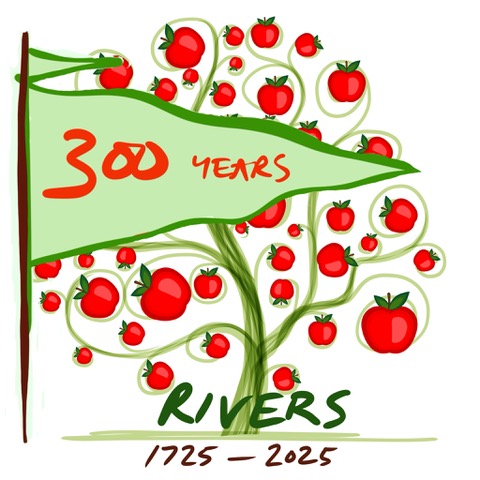Rivers Orchard - a Sanctuary for Wildlife
Written by Charmaine Cooper
Published on May 1, 2025.
Return to the contents page.
Wandering through the Orchard on a cold, damp day in early 2025, the year of the 300th anniversary of the establishment of Rivers Nursery by John Rivers, one can’t help but reflect on the changes that have occurred over those years. We particularly think of Victorian times and Thomas Rivers, 1798 to 1877, when the family business flourished and the Nursery became one of the most important in the country, stretching to 400 acres.
Now we only have the Orchard, the adjacent meadow and scrub area, much reduced in size, and only occupying one hundredth of the area of the Victorian site. However, we can be thankful that we still have this heritage, supported by the RHSO volunteers. On this grey day the Orchard, meadow and surrounding areas, once part of the Nursery, appear devoid of life, but no – use your eyes, ears and nose, and you will be rewarded. Blackbird, Redwing, Fieldfare and Jay will fly in from time to time seeking the last of the decaying fruit. In summer months you may spot little heaps of soil around a central hole revealing the presence of Mining Bees. But today it maybe an imprint of a cloven hoof in the muddy soil that attracts your attention, revealing the passage of a Muntjac, and with luck, you may see the animal itself along with Rabbits and, maybe, a Fox. Even if the Fox does not appear you may still detect a pungent odour where the animal has passed through earlier. All around, in the plants and trees, the early buds have appeared, foretelling of the approaching spring.
Having walked these areas for thirty years (and writing a monthly diary for the Orchard Website from 2010 to 2018), I have witnessed many changes in the wildlife. I have memories of the 1990s and early 2000s as having much more evenly tempered weather, frequently changing between sunshine and showers, without the extremes of heat, cold or rain that we experience today. In those days there was great diversity in the wildlife. My diaries for the summer months of 2011 to 2013 recorded, for example, Fleabane, Teasel, Marjoram, Robin’s Pincushion Gall, Wild Strawberry, Bee Orchid, Pyramidal Orchid, Bird’s Foot Trefoil and Oxeye Daisies amongst the many flora.
Fauna mentioned in the same period included many butterflies, including Speckled Wood, Ringlet, Brimstone, Comma, Gatekeeper, Meadow Brown, Peacock, Small Tortoiseshell, Red Admiral, Orange Tip, Small White, Large White, Green-veined White, Common Blue, Small Blue, Small Skipper, Essex Skipper and, possibly for the first time in July 2013, in what I described as blistering heat, the Marbled White which usually resides further south.
My diaries, of course could not record everything, but focused on things of particular note. In that same period, I recorded a number of day-flying moths, including Six-spot Burnet (particularly abundant in the heat of 2013), the rarer Five-spot Burnet, the Silver Y, White Plume and the Yellow Shell Moth. Other insects mentioned frequently included Crickets, Grasshoppers, Hairy Shieldbug, Devil’s Coach Horse Beetle, Green Orb-weaver Spiders and various Dragonflies. Birds included the Green Woodpecker (every day), Buzzard (infrequently), Yellowhammer, Song Thrush, Cuckoo (heard through April and May, but not always seen) the Turtle Dove (a regular but elusive visitor to the Orchard’s Meadow in June) and, a special treat seen in July 2012, the Little Owl.
How have changes in climate and other factors affected this array of wildlife? Sadly, the yaffle of the Green Woodpecker is rarely heard and the bird is sighted even less. Climate change, and the loss of fields and countryside have undoubtedly led to loss of habitat for many species. However, new birds have appeared in recent years, including the Little Egret with its distinctive white plumage. A newcomer to this country, enjoying our milder winters, it would normally be seen near water, but during bad weather it ventures inland and can often be seen hugging the hedgerow or feeding in the meadow. Another bird benefitting from the warmer winters is the Chiffchaff which can frequently be seen in the summer months. Usually migratory, some birds are now choosing to stay here to overwinter. The native Song Thrush, now on the endangered red list, is still in the scrub. Rather shy, it is not often seen, but makes its presence known by broken snail shells close to a stone that it uses as an anvil. Their beautiful song however, can be heard, as they sing high in the treetops.
Many birds have withstood the changes and remain present in good numbers. Blackbirds, Robins and the various Tits maintain a good population. And, of course that most versatile and resilient of all – the Woodpigeon. It suffers from a bad reputation, especially from those who feed the birds in their gardens, but it has to be admired for the way it is equipped to deal with the hardships that may come its way. As long as they have water their digestive system allows them to eat any type of grains, berries or greenery. They are not restricted by breeding season and they are able to feed their young on pigeon milk which they regurgitate, avoiding the need to bring food back to the nest. All admirable but not enough to change the minds of dissenters!Other successes include Buzzards, which were only occasionally seen in the 2010s, but now appear regularly often high in the sky and easily missed by walkers who neglect to look up. While looking up, one will often see that great success story of reintroduction, the Red Kite. These magnificent birds have rewarded the help they were given by spreading eastwards from Wales to cover much of the country. No longer needing assistance from man, they are very capable survivors supported by a ready supply of road kill and carrion, a success probably not linked to climate change.
On a hot day in the meadow next to the Orchard, the keen observer may witness a species that is linked to our hotter summers. Grass snakes will sunbathe on bare soil patches before zigzagging away into the long grass when disturbed. This meadow and the Orchard itself have benefitted from the Orchard group’s practice of judicious use of the mower to allow longer grasses and wild flowers, such as bee orchids and knapweed, to flourish. These enable butterflies to lay their eggs on the foodplants that will feed their caterpillars, and later, when the butterflies emerge, the nectar on which they can feed. The diversity of wild plants attracts many species of bees, butterflies and dragonflies. One notable success is the beautiful Marbled White Butterfly. Only seen rarely during the 2010s, they can now be seen in great numbers on warm summer days, their continued success assured by the Cocksfoot Grass on which their caterpillars feed.
Sadly, other species are dwindling. Weather and habitat destruction could have affected the various Skipper species and Peacock butterfly, but early species, such as the Brimstone, are still present although in fewer numbers. The later emerging butterflies may have difficulty in finding nectar and breeding places due to the plants they rely on being withered and dying during the hot, dry summers. Although they like heat they cannot survive without their basic necessities. While some species may die out, others may find more comfortable conditions further north and be lost from the area.
Bees rely on fruiting trees, blackthorn bushes and wild flowers for their nectar source and, in return, pollinate our fruit trees and plants, but they are declining across the country due to changing farming practices and the torrential rain we now experience. The loss of wild flowers deprives bees and many other insects of their vital food source. Early flowering plants, such as the humble Dandelion, are essential in early spring when many insects will emerge during warm spells but other plants are not yet flowering. Thankfully the Orchard respects their worth and these plants help early Queen Bumblebees thrive. Climate change is inevitably affecting what we see in the Orchard. Butterfly and Moth populations have declined with the loss of food plants for caterpillars and nectar sources for adults. Bird populations have also declined with loss of insect populations to feed chicks and sudden cold wet spells which can kill chicks in their nests.
The management of the Orchard, surrounding meadow and scrub is critical to the survival of the flora and fauna. Even something like the timing of grass cutting, which might seem of little importance, is absolutely vital. If the grass is cut too early the seeds for next year’s wildflowers and grasses will be lost and that will mean the loss of many insect species and birds dependent on them. It may seem only a small thing but it is an important one that helps keep the harmony as all species struggle in an everchanging world and climate.
As I leave the site, I feel some sadness for what has been lost. Although, under the care of the volunteers, the orchard and meadow have been well maintained, the surrounding land has suffered from loss of fields, hedgerows and countryside to house building. This formed part of the greater ecosystem which supported the diversity of wildlife that could be seen at the Nursery Site. I comfort myself with the thought that nature has always evolved to cope with whatever man or climate throws at it. We have had new species arrive and we can look forward to more, and hopefully the surrounding areas may recover so that some of the lost species can return.
Charmaine Cooper, May 2025
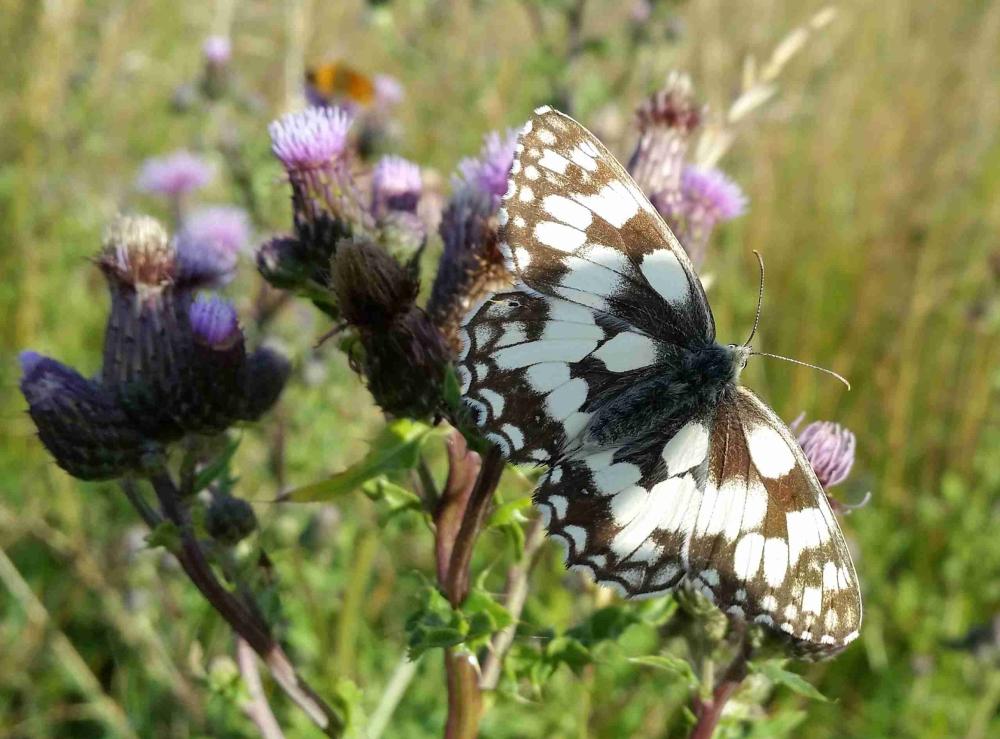
Marbled White - July 2017 |
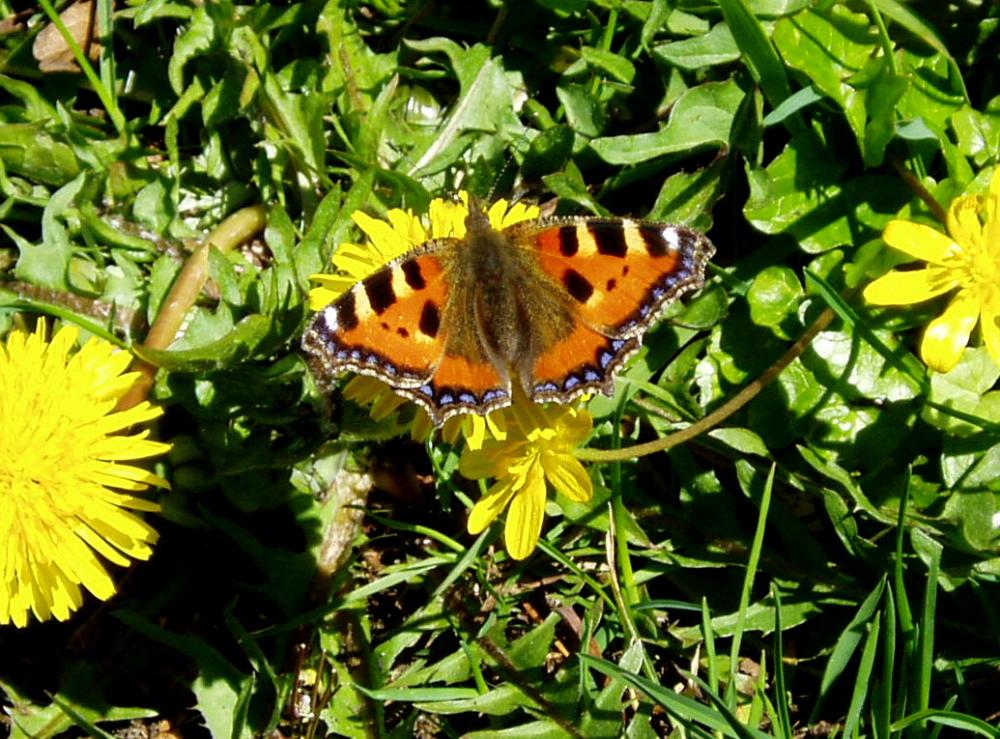
Small Tortoiseshell - April 2013 |
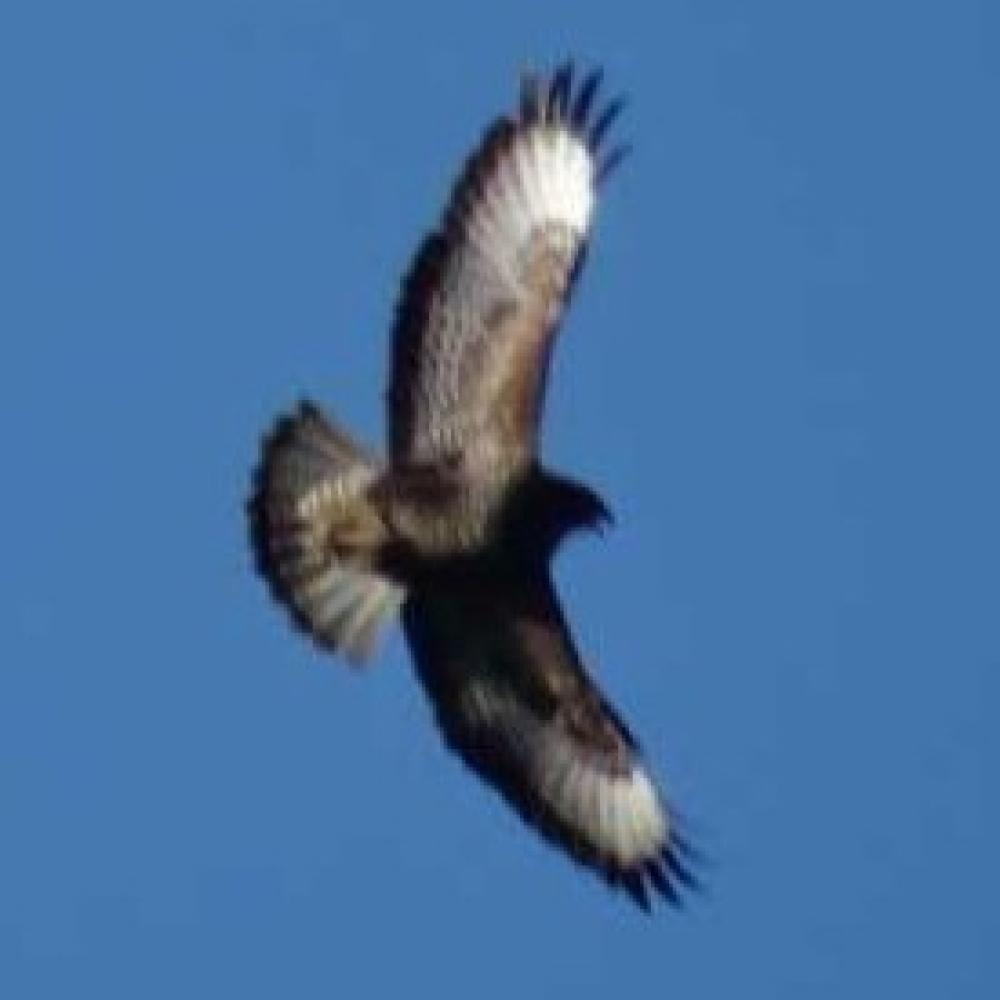
Buzzard - May 2016 |
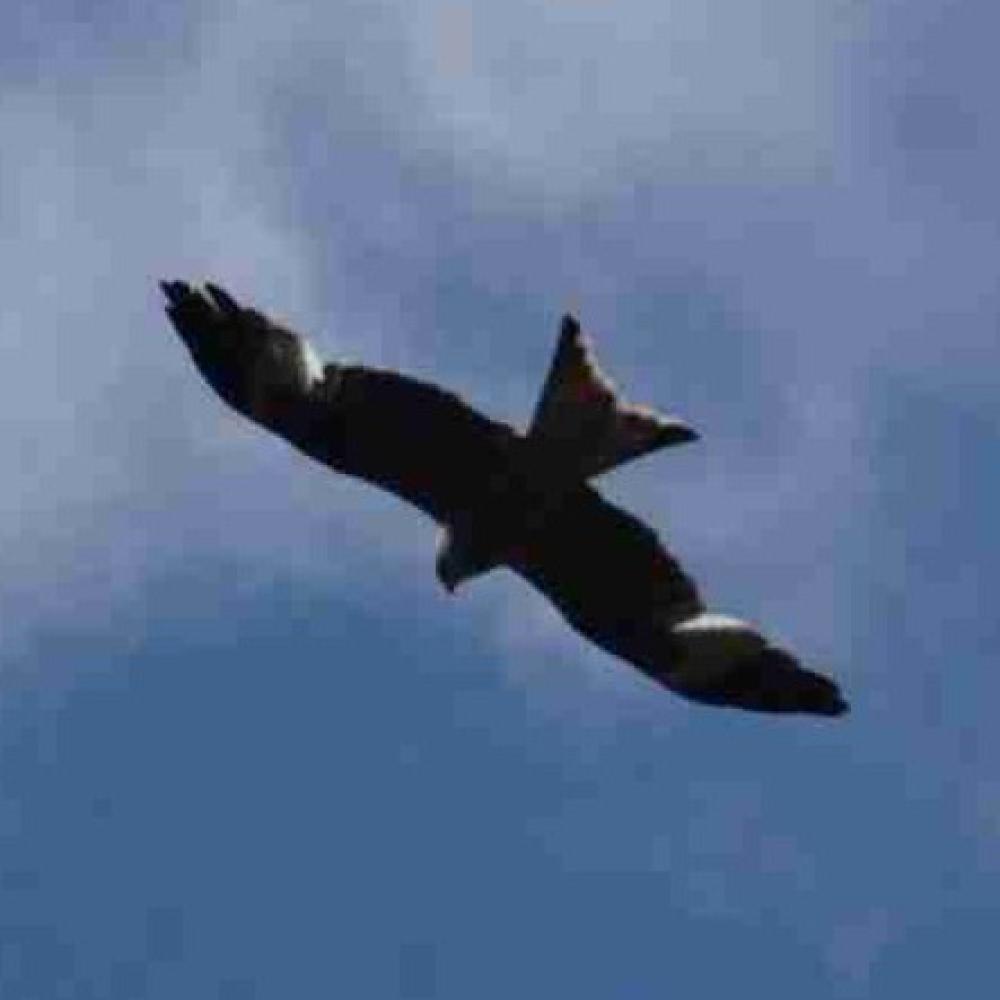
Red Kite - May 2016 |
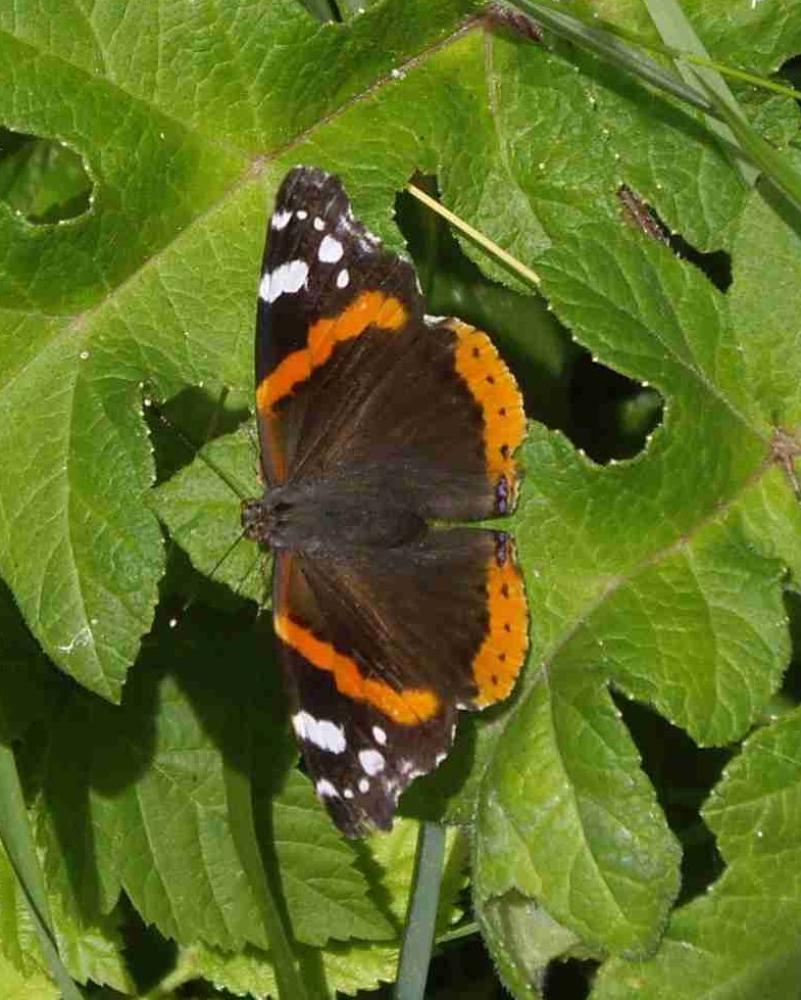
Red Admiral - July 2016 |
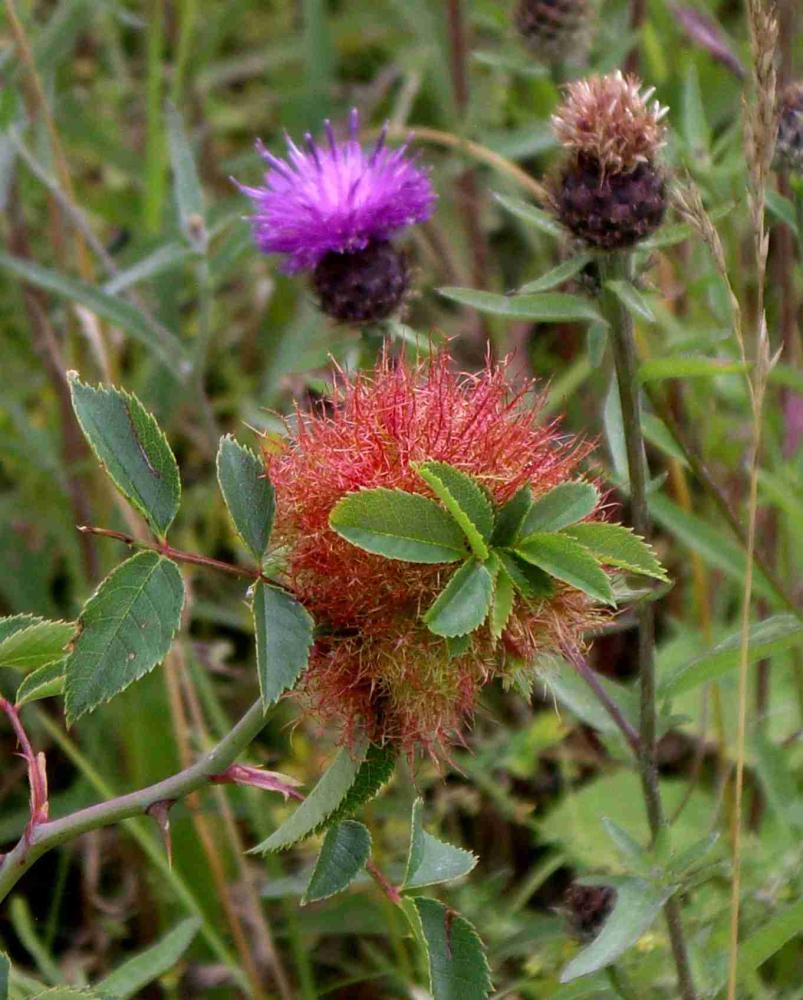
Robins Pincushion Gall - August 2015 |
